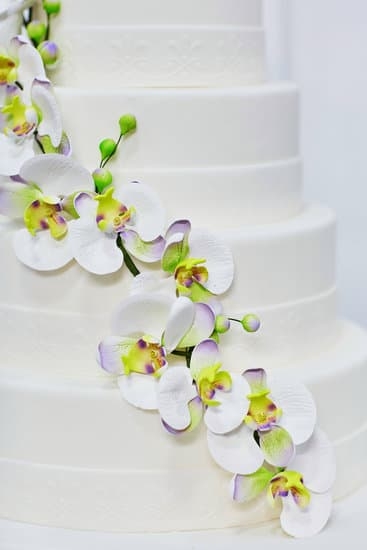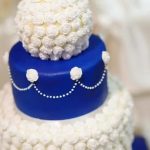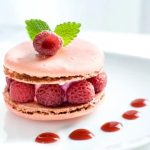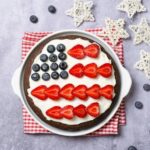Frosting plays a crucial role in elevating the appearance and taste of cakes, making it an essential element in cake decorating. Whether you’re a baking enthusiast or a professional pastry chef, knowing how to prepare frosting for cake decorating is key to creating visually stunning and delicious confections.
In this blog post, we will guide you through the process of preparing different types of frosting, from classic buttercream to elegant fondant and royal icing, as well as provide tips on enhancing your creations with color, flavor, and decorative techniques.
When it comes to frosting, there is a multitude of options to choose from, each offering unique textures and flavors. Buttercream, whipped cream, cream cheese, fondant, and royal icing are just some of the popular choices that can be used to adorn cakes with beautiful designs and intricate details. Understanding the characteristics of each type of frosting will help you select the most suitable one for your desired cake decorating technique.
To embark on your journey into the world of frosting for cake decorating, you’ll need a combination of basic ingredients like butter, sugar, flavorings, and food coloring. Additionally, having the right tools and equipment at hand is crucial for achieving smooth and professional-looking frosting.
From mixers to piping bags, tips to spatulas, each tool serves a specific purpose in the process of creating stunning decorations on your cakes. Stay tuned as we delve deeper into the art of preparing frosting step by step in our upcoming sections.
Types of Frosting
When it comes to cake decorating, choosing the right type of frosting is crucial in achieving the desired look and taste for your baked creations. There are several different types of frosting that can be used, each with its own unique characteristics and flavors.
One of the most popular choices is buttercream frosting, known for its creamy texture and ability to hold intricate designs when piped onto cakes. Whipped cream frosting offers a lighter and airy option that is perfect for those who prefer a less sweet topping.
Cream cheese frosting provides a tangy flavor that pairs well with carrot or red velvet cakes. Fondant, on the other hand, offers a smooth and versatile coating that can be molded into various shapes and decorations. Lastly, royal icing is often used for intricate designs and decorations on cakes and cookies due to its ability to harden when dry.
Each type of frosting requires specific ingredients to achieve the desired taste and texture. Buttercream frosting typically consists of butter, powdered sugar, vanilla extract, and milk or heavy cream. Whipped cream frosting calls for heavy cream, powdered sugar, and vanilla extract for a light and airy finish.
Cream cheese frosting includes cream cheese, butter, powdered sugar, and vanilla extract for a tangy yet sweet flavor profile. Fondant is made from marshmallows or gum paste mixed with powdered sugar for a smooth finish that can be rolled out easily. Royal icing is made from egg whites or meringue powder mixed with powdered sugar to create a hard shell when dried.
In order to prepare these different types of frostings successfully, it is important to have the right tools and equipment on hand. A stand mixer or handheld mixer is essential for achieving smooth and creamy frostings without lumps. Piping bags and tips are necessary for creating intricate designs on cakes or cupcakes.
A spatula or offset spatula will help in spreading the frosting evenly across the surface of the cake or smoothing out any imperfections. By having these tools at your disposal, you can master the art of preparing frosting for cake decorating and elevate your baked creations to new heights of deliciousness and beauty.
Ingredients Needed
Frosting is a crucial element in cake decorating, as it not only adds flavor but also serves as the canvas for creative designs and decorations. Whether you are a novice baker or an experienced pastry chef, having the right ingredients is essential for preparing delicious and visually appealing frosting. Knowing what goes into your frosting can make a significant difference in the taste and texture of your final product.
One of the most common ingredients used in frosting recipes is butter, which provides richness and creaminess to the frosting. Powdered or confectioners’ sugar is another staple ingredient that helps sweeten and thicken the frosting. Additionally, flavorings such as vanilla extract, almond extract, or citrus zest can add depth and complexity to the overall taste of the frosting.
Food coloring is another key ingredient that allows you to customize the color of your frosting to match your cake’s theme or design. While traditional food coloring works well for achieving vibrant colors, natural ingredients like beet juice, matcha powder, or turmeric can be used for more subtle and earthy tones. Experimenting with different colors and flavor combinations can elevate your cake decorating skills and create visually stunning creations.
Tools and Equipment
When it comes to preparing frosting for cake decorating, having the right tools and equipment is essential to ensure a smooth and successful process. Here are some of the must-have items that will make your frosting preparation much more manageable:
Mixer
A stand mixer or a hand mixer is crucial for effectively creaming butter and sugar together to create a smooth and fluffy frosting. The mixer helps incorporate air into the mixture, resulting in a lighter texture.
Piping Bags and Tips
Piping bags are essential for neatly applying frosting onto cakes and creating intricate designs. Coupled with various piping tips, you can achieve different patterns, shapes, and textures on your cakes.
Spatula and Offset Spatula
Spatulas are handy for mixing ingredients together when making frosting. An offset spatula is perfect for smoothly spreading frosting onto cakes, creating an even surface for decoration.
Having these tools on hand will not only facilitate the frosting preparation process but also allow you to explore your creativity in cake decorating by using different techniques. Be sure to invest in quality tools that will last you through many baking projects to come.
Step-by-Step Instructions
Frosting is a crucial element when it comes to cake decorating. It not only adds flavor to the cake but also serves as a foundation for various decorative elements. Knowing how to prepare frosting for cake decorating is essential for achieving professional-looking results. Whether you are a beginner or an experienced baker, mastering the art of frosting preparation can take your cakes to the next level.
To start preparing frosting for cake decorating, you will need basic ingredients such as butter, sugar, flavorings, and food coloring. The type of frosting you choose will determine the specific ingredients required. For example, buttercream frosting typically consists of butter, powdered sugar, vanilla extract, and a pinch of salt. On the other hand, fondant requires ingredients like marshmallows, water, and confectioners’ sugar. Understanding these basic ingredients is fundamental in creating delicious and visually appealing frostings.
| Ingredients | Example |
|---|---|
| Butter | 1 cup unsalted butter |
| Sugar | 4 cups powdered sugar |
| Flavorings | 2 tsp vanilla extract |
| Food Coloring | A few drops of gel food coloring |
In the subsequent sections, we will delve into step-by-step instructions on how to prepare various types of frosting for cake decorating with detailed tips and techniques for achieving different textures and consistencies. Mastering this skill will allow you to create stunning cakes that taste as good as they look.
Coloring and Flavoring Frosting
When it comes to decorating a cake, one of the most fun and creative aspects is adding color and flavor to your frosting. Whether you’re aiming for a vibrant rainbow design or a subtle hint of vanilla, the possibilities are endless. In this section, we will explore how you can easily add color and flavor to your frosting using both natural ingredients and food coloring.
To start off, let’s take a look at some common natural ingredients you can use to add flavor to your frosting. Vanilla extract is a classic choice that enhances the overall taste of your frosting. You can also experiment with other extracts like almond, lemon, or even coconut for a unique twist. For those looking for a more intense flavor, adding fruit purees or citrus zest can provide a burst of freshness to your frosting.
When it comes to adding color to your frosting, there are several options available. Gel food coloring is preferred by many decorators as it provides vibrant colors without changing the consistency of the frosting. You can find gel food coloring in a wide range of shades, making it easy to achieve any color imaginable. Another option is powdered food coloring which works well for creating pastel tones or when you want to avoid adding extra liquid to your frosting.
Here are some tips on how to effectively color and flavor your frosting:
- Start with small amounts of extract or color and gradually add more until you reach your desired taste or hue.
- Remember that colors may deepen over time, so allow your colored frosting to sit for a few hours before using.
- If using natural ingredients like fruit purees, make sure to adjust the amount of sugar in your recipe accordingly to maintain the right consistency.
By following these tips and experimenting with different flavors and colors, you can take your cake decorating skills to the next level and create stunning designs that not only look good but taste delicious too.
Tips for Decorative Techniques
Decorating cakes with frosting is an artistic and creative process that can truly elevate the look of your baked goods. Whether you are a novice baker or an experienced cake decorator, mastering different techniques for using frosting can help you achieve stunning results. Here are some tips and tricks to take your cake decorating skills to the next level:
- Use a variety of piping tips: Experimenting with different shapes and sizes of piping tips can help you create unique designs and textures on your cakes. For example, use a small round tip for writing messages or creating intricate details, while a large star tip can be used for creating fluffy rosettes or borders.
- Practice consistency in frosting: The texture and consistency of your frosting play a crucial role in achieving specific decorative techniques. For intricate designs that require precise piping, make sure your frosting is slightly stiff. On the other hand, if you want to create smooth layers and finishes, opt for a softer consistency.
- Try different frosting techniques: There are numerous ways to use frosting to decorate cakes, such as buttercream ruffles, ombre designs, watercolor effects, and even edible lace. Watch tutorials online or take a cake decorating class to learn new techniques and expand your repertoire.
Using these tips and tricks can help you unleash your creativity and transform simple cakes into works of art. Remember that practice makes perfect when it comes to cake decorating, so don’t be afraid to experiment with different techniques and have fun along the way. From elegant floral designs to whimsical patterns, there are endless possibilities when it comes to using frosting for cake decoration.
So next time you bake a cake, don’t just stop at spreading plain frosting on top – use these tips for decorative techniques to take your creations to the next level. With patience, practice, and a little bit of creativity, you’ll soon be wowing friends and family with beautifully decorated cakes that not only taste delicious but also look stunning.
Troubleshooting
Buttercream Frosting Is Too Runny
If you find that your buttercream frosting is too runny and not holding its shape when piped onto a cake, there are a few possible reasons for this issue. One common culprit is that the butter was too soft when you began the mixing process. To remedy this, try refrigerating the frosting for 15-20 minutes to firm it up before continuing to mix it.
Another reason could be that you added too much liquid, such as milk or cream, to the frosting. In this case, gradually adding more powdered sugar until you reach the desired consistency can help thicken it up.
Air Bubbles in Whipped Cream Frosting
When using whipped cream frosting for cake decorating, you may encounter air bubbles that create an uneven and messy appearance on your cake. To prevent this issue, make sure to whip the cream just until stiff peaks form – overmixing can introduce too many air bubbles into the frosting. If you do notice air bubbles in your whipped cream frosting, gently fold the mixture with a spatula to release some of the trapped air and create a smoother texture.
Fondant Cracking or Tearing
Fondant is a popular choice for covering cakes due to its smooth finish and versatility in design. However, fondant can sometimes crack or tear during application if not handled properly. To avoid this issue, make sure your fondant is rolled out evenly and not too thin or thick.
If you notice cracking or tearing while applying fondant to a cake, gently smooth out the area with your hands or use a small amount of shortening on a brush to help mend any imperfections. Additionally, working in a cool environment can also prevent fondant from becoming too soft and difficult to work with.
Conclusion
In conclusion, mastering the art of frosting preparation is essential for those looking to elevate their cake decorating skills. Whether you choose buttercream, whipped cream, cream cheese, fondant, or royal icing, understanding the basic ingredients and tools needed is crucial in creating beautiful and delicious cakes. By following the step-by-step instructions provided in this blog post and experimenting with different textures and consistencies, you can truly take your cake decorating to the next level.
Adding color and flavor to your frosting can also bring a unique touch to your creations. From using natural ingredients to food coloring, there are endless possibilities for customizing your frosting to suit your taste preferences and design aesthetic. Additionally, incorporating decorative techniques such as piping, smoothing, or creating intricate patterns can make your cakes stand out and impress your guests.
As you continue on your cake decorating journey, remember that practice makes perfect. Don’t be afraid to experiment with different flavors, colors, and designs when it comes to frosting. And if you encounter any challenges along the way, refer back to our troubleshooting section for solutions. Most importantly, have fun with the process and let your creativity shine through in every cake you decorate using the knowledge gained on how to prepare frosting for cake decorating.
Frequently Asked Questions
Should I Heat Up Frosting Before Putting It on a Cake?
Heating up frosting before putting it on a cake is not necessary, as most frostings are designed to be used at room temperature. However, if your frosting is too stiff, gently heating it can make it easier to spread.
Should I Refrigerate Frosting Before Piping?
Refrigerating frosting before piping can help firm it up and hold its shape better while decorating. This is particularly important for intricate designs or details that require more precision – the colder the frosting, the better it will hold.
How Do You Make Store-Bought Frosting Good for Decorating?
To make store-bought frosting good for decorating, you can start by whipping it with a mixer to make it lighter and fluffier. Adding powdered sugar or cornstarch can also help thicken the frosting and make it more suitable for piping intricate designs without losing its shape.

Welcome to our cake decorating blog! My name is Destiny Flores, and I am the proud owner of a cake decorating business named Cake Karma. Our mission is to provide delicious, beautiful cakes for all occasions. We specialize in creating custom cakes that are tailored specifically to each customer’s individual needs and tastes.





